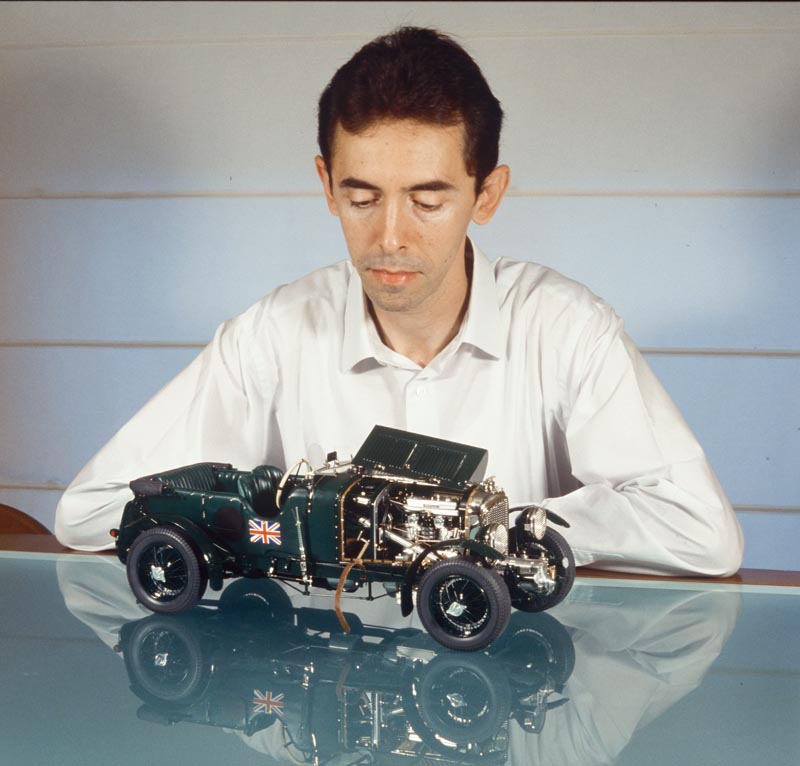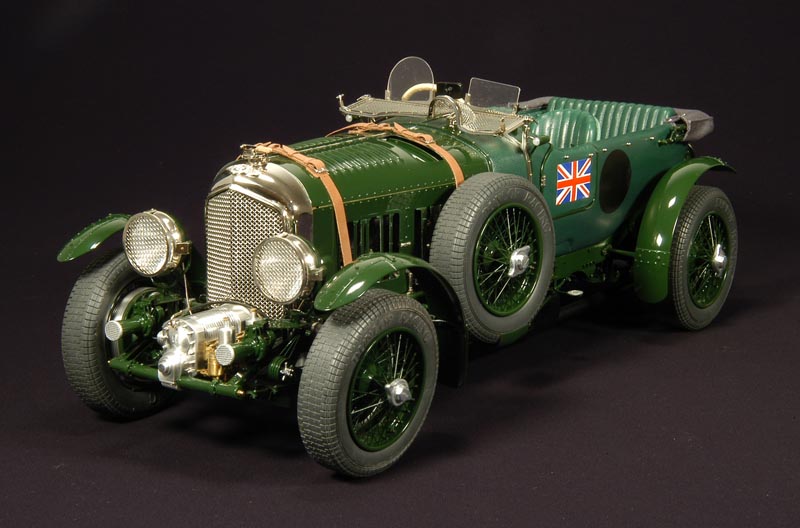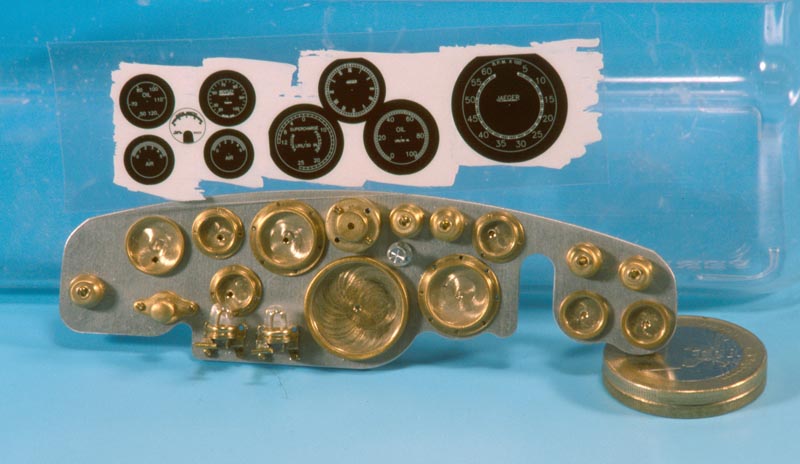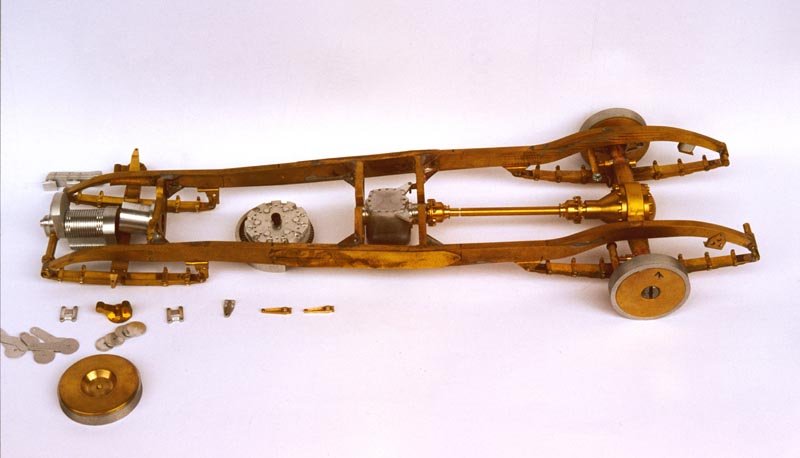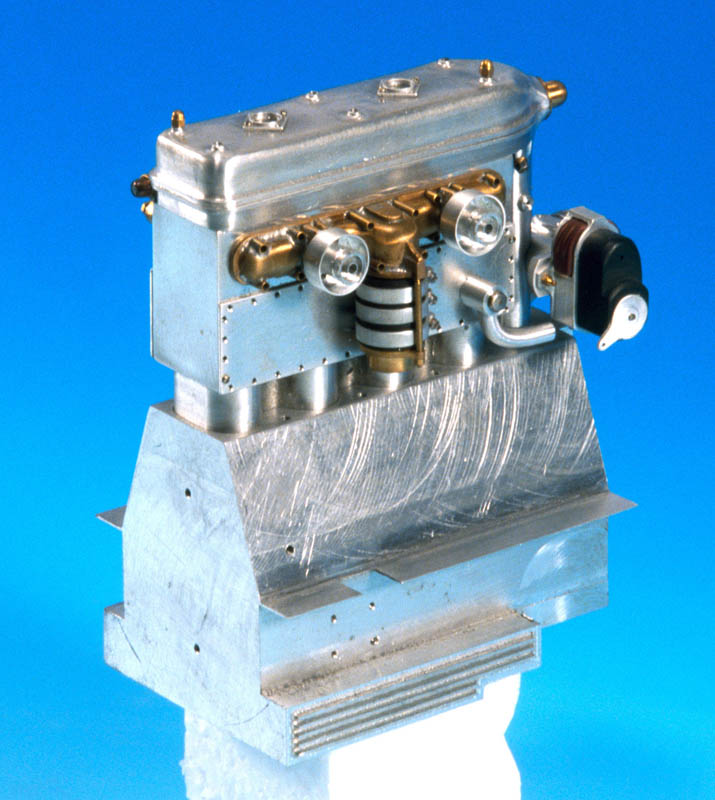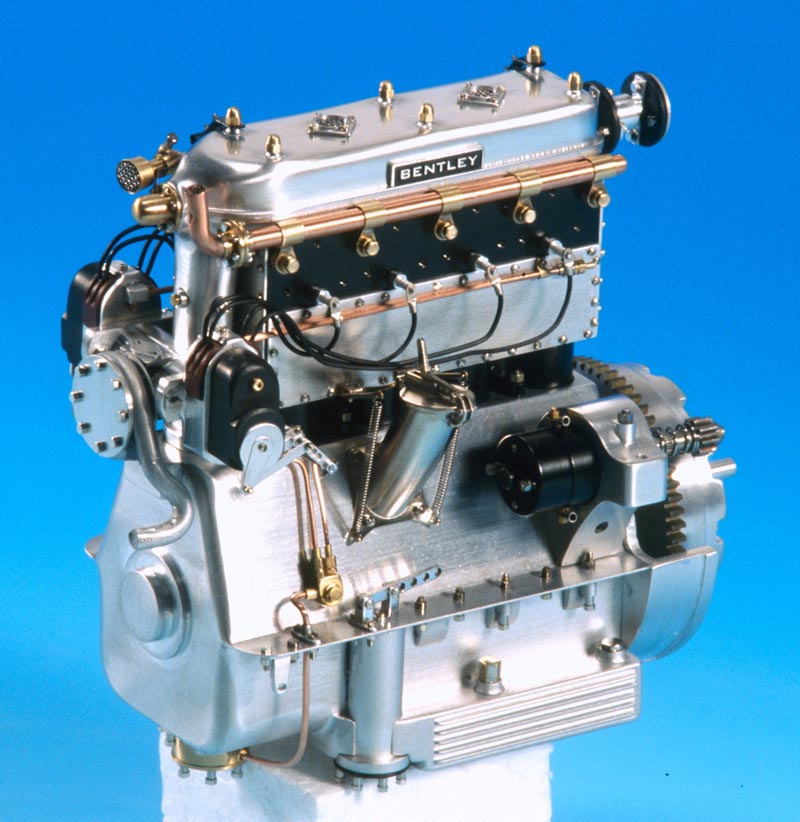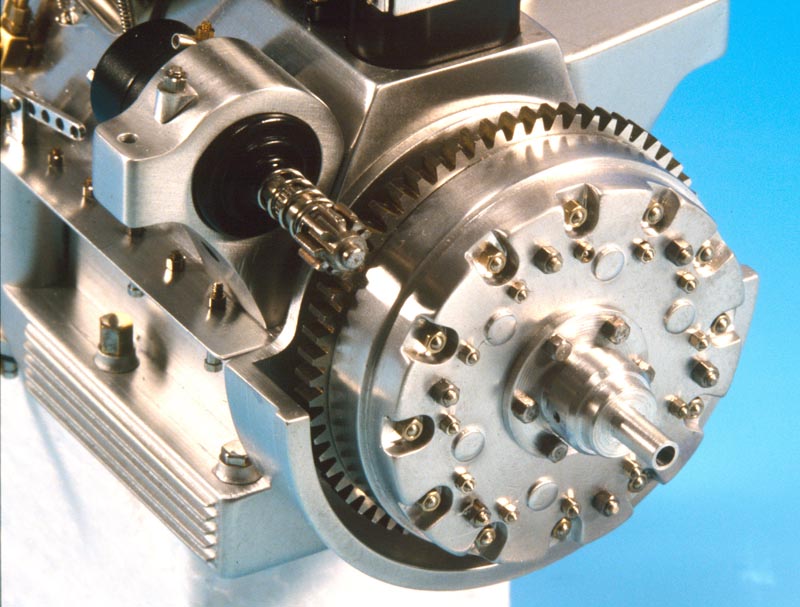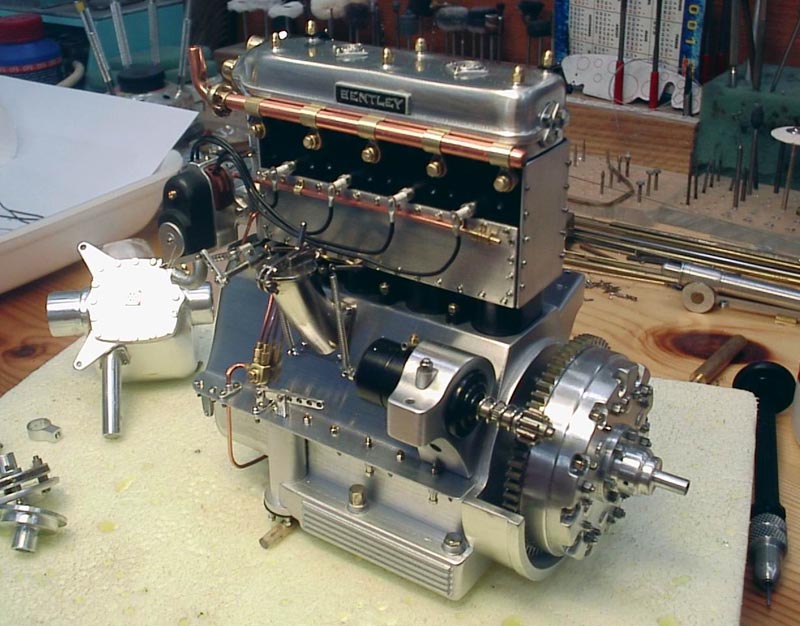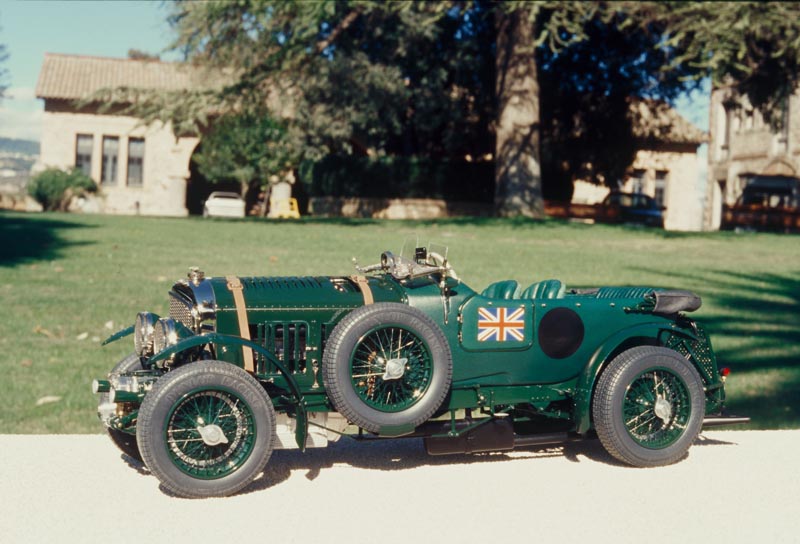A Self-Taught Model Maker Who Takes Perfection Seriously
About Francisco Pulido
Francisco Pulido was born in Caldes de Montbui, a small town near Barcelona, Spain. He builds automobile models, primarily in 1/10 scale, making every part himself. Francisco has even taken processes like painting and electro-plating in-house, in order to have total quality control. A typical model takes Mr. Pulido about 3,000 hours, and can involve the production and assembly of up to 6,000 pieces. He generally works from plans and photos; however, in the case of the 4.5 liter Blower Bentley, Francisco drew the plans himself after taking measurements from the real car.
Though Francisco is trained in electronics, all of the mechanical skills required for his model building were self-taught—including operating machine tools. His shop includes a lathe, milling machine, sandblaster, polishing motor, hanging motor, hand tools, and an ultrasonic machine to clean pieces before plating. Francisco also uses many jeweler’s tools for very fine work.
At some point, Francisco became acquainted with master model maker Gerald Wingrove through his work. Indeed, it was Mr. Wingrove who recommended that we take a look at Mr. Pulido’s work, as one of the most promising new talents in the field. While this page is primarily focused on just one of Francisco’s model cars—the 4.5 liter Blower Bentley—he has built several others.
From Simple Kits to Custom Models
Like the vast majority of modelers, Francisco made his start with commercial kits. He noted, “I remember, perfectly, the first cars that my father bought me to build. They were Matchbox cars, and one Saturday morning was enough to destroy the kit, assembling without painting it.” Despite the crude nature of his first models, Francisco’s love of the assembly process and passion for the world of cars ultimately drove him to continue perfecting his techniques.
As he gained knowledge, the young builder would add new elements to his models, like a painted finish. “From Matchbox I passed to another better brand, Esci. It was at that time that Zanini triumphed in the rallying world, and I can still remember the amount of work that the SEAT 131 Abarth, with its blue and yellow paint, gave me. Years later, and after lots of saving, I had the opportunity to built my first Tamiya kit.”
Instruments for the Blower Bentley panel were turned, and the dial faces were prepared for application to the gauges.
Over the years, Francisco experimented with different modeling techniques, like photoengraving, transkits, and other methods for improving the detail in his kits.
On his departure from kits, Francisco said, “The Pocher Alpha Romeo 8C was the last commercial kit that I built. I improved many pieces, but when I finished it I had the feeling that I had arrived at the end of an era—and that I had to take a very different path to continue with my hobby. I joined the workshop with the intention of building a car, starting from scratch, to 1/10 scale.”
He continued, “I had calculated around two or three hundred pieces, and my first idea was to copy a Bburago (brand) model, increase the size of it, and build the Bugatti Type 59. When I finished the first wheel, I thought that I could make something better than I’d imagined in the beginning. I ended up spending two years working on something that had begun as a game, and at times it was very hard work. Two years, or the equivalent to 1,600 hours of my free time were spent in building and assembling those 4,600+ pieces that made up the Bugatti.”
The first stage of Bentley engine construction shows the valve cover completed, along with some of the upper block work. The lower block was still just rough billet.
Francisco remarked, “The most important thing is to try and better oneself, and solve the thousand and one problems that come up over time. Before finishing the Bugatti, I thought about my next adventure, the Bentley 4.5 Litre Blower. Now that I am about to finish the Bentley, I have the majority of the documentation of my next model: the Bugatti Type 57 SC Corsica.”
“Working on the Bentley has been really amazing. I have improved in many aspects, and that has been one of the causes for the increase in the number of pieces. I hope to continue along these lines for a long time… and hope that all of us who like this hobby can enjoy it.”
Videos of Francisco’s Work
Building the 4.5 Liter Blower Bentley
Francisco has provided a great deal of information about the original Blower Bentley, and how he built his 1/10 scale model. Read more about the impressive automobile.
Additionally, view more photos of Francisco’s scale model Bentley.

